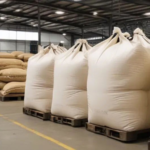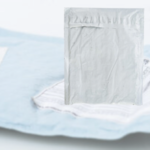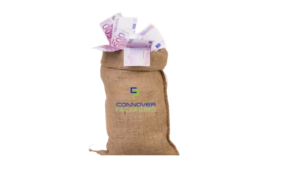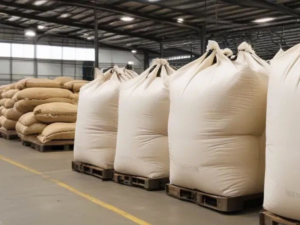
A Comprehensive Guide to Plastic Evidence Bags in Law Enforcement – Significances & Roles

In the intricate realm of criminal investigation and forensic science, the meticulous handling and packaging of evidence stand as pillars of truth, essential for solving crimes and upholding justice. One invaluable tool within this process is the humble yet indispensable plastic evidence bag. In this comprehensive guide, we’ll embark on a deeper exploration of plastic evidence bags in the context of law enforcement. We’ll unravel their significance, delve into the various types available, and offer a thorough understanding of how to utilize them effectively in the pursuit of justice.
The Significance of Proper Evidence Packaging
Before we delve into the specifics of plastic evidence bags, it’s vital to grasp why evidence packaging is of paramount importance:
- Preserving Integrity: Evidence packaging serves as a fortress guarding the integrity of collected items. It ensures that the evidence remains unaltered from the moment of discovery, shielding it from contamination, degradation, or tampering.
- Establishing a Chain of Custody: Every piece of evidence must have an unbroken chain of custody. Proper packaging creates a transparent record of who had possession of the evidence from the crime scene to the courtroom, eliminating doubts or suspicions.
- Enhancing Admissibility in Court: Well-packaged evidence stands as a compelling witness in court, strengthening the prosecution’s case. In the courtroom, it guarantees that what the jury examines is a faithful representation of what was discovered at the crime scene.
- Safety for Investigators: Beyond preserving evidence, packaging also safeguards the individuals involved in handling it. This is particularly crucial when dealing with hazardous materials or substances. Proper evidence packaging acts as a shield, ensuring the safety of those tasked with gathering and preserving crucial clues.
The Role of Plastic Evidence Bags
Plastic evidence bags are the workhorses of evidence packaging in law enforcement. They come in various forms, with clear plastic evidence bags and breathable plastic evidence bags being the most common and versatile. Let’s take an in-depth look at each type:
Clear Plastic Evidence Bags
Clear plastic evidence bags are the standard choice for packaging a wide range of evidence items. Their advantages are numerous:
- Visibility: The transparency of clear plastic bags allows investigators and forensic experts to view the contents without opening the bag. This minimizes the risk of contamination or tampering and expedites evidence identification.
- Versatility: Clear plastic bags are suitable for various evidence types, from clothing and weapons to documents and biological samples. Their adaptability makes them indispensable in a wide range of scenarios.
- Tamper-Evident Features: Many clear plastic bags come with tamper-evident features, such as seals that display “VOID” if tampered with. This adds an extra layer of security to the evidence, bolstering its credibility in court.
Breathable Plastic Evidence Bags
Breathable plastic evidence bags are designed for items that may be sensitive to moisture. These bags possess small perforations that allow air to circulate while still providing protection. Here’s why they are valuable:
- Moisture Control: Breathable bags are ideal for evidence like clothing or biological samples, as they prevent the buildup of moisture that can lead to contamination or deterioration. By maintaining the right humidity levels, they ensure evidence preservation.
- Protection from Mold and Mildew: Items prone to mold or mildew can benefit from breathable bags, as they help maintain a dry environment. This safeguard is crucial for evidence collected from damp or humid crime scenes.
- Extended Preservation: By controlling humidity and preventing the growth of harmful microorganisms, breathable bags aid in preserving the integrity of evidence over extended periods. This is particularly important for cases that may take months or even years to resolve.
Utilizing Plastic Evidence Bags Effectively
Now that we’ve explored the types of plastic evidence bags, let’s delve into how to use them effectively:
- Proper Labeling: Each plastic evidence bag should be meticulously labeled with essential information, including the date, time, location, and the name of the investigator. This labeling ensures a clear record of the evidence’s origin and its journey through the criminal justice system.
- Assign Unique Identifiers: To maintain the chain of custody and prevent mix-ups or confusion, assign a unique identifier or evidence number to each bag. This small yet critical detail ensures that every piece of evidence can be tracked with precision.
- Handle with Care: When placing evidence in plastic bags, use proper tools like tweezers or gloves to avoid direct contact. This minimizes the risk of contamination or leaving fingerprints on crucial items. The gentle touch is essential to preserving the evidence’s integrity.
- Secure Sealing: Seal plastic evidence bags securely with tamper-evident tape or seals that display evidence of tampering. This step is not just a formality; it ensures that the evidence remains untouched until it reaches the laboratory or courtroom. The seal is the sentry guarding the truth.
- Document the Chain of Custody: Keep meticulous records of every individual who handles the evidence at each stage of the process, including law enforcement officers, forensic analysts, and legal professionals. This documentation is a testament to the evidence’s integrity and serves as a safeguard against any potential challenges in court.
- Thoughtful Storage: Even after packaging, evidence requires proper storage. Store plastic evidence bags in a secure and controlled environment, maintaining appropriate temperature and humidity levels to prevent deterioration or contamination. Some evidence, such as biological samples, may require refrigeration. This is the final, crucial step in preserving the evidence’s integrity.
Conclusion
The use of plastic evidence bags is an indispensable aspect of evidence packaging in law enforcement. These bags, whether clear or breathable, serve as the guardians of truth, ensuring that the justice system functions with integrity and credibility. By following the steps outlined in this guide and adhering to best practices, law enforcement agencies can strengthen their cases, protect the innocent, and hold the guilty accountable.
In the pursuit of justice, every detail matters, and evidence packaging is the foundation upon which successful investigations are built. It’s more than a process; it’s the assurance that the truth will prevail, the innocent will be vindicated, and the guilty will face the consequences of their actions. Plastic evidence bags are not just containers; they are the embodiment of justice’s commitment to unwavering fairness and precision.
As you navigate the complex world of law enforcement, remember the significance of proper evidence packaging and the role plastic evidence bags play in ensuring that justice is not just served but is seen to be served, with transparency, credibility, and unwavering integrity.
Share:
Get A Quick Quote
Social Media
Most Popular


The Ultimate Guide to Organizing and Storing Soil Bags


Clear Poly Mailer Bags: The Ultimate Shipping Upgrade
Categories
Tags
Related Posts

A Step-by-Step Guide on How to Organize Payroll with Payroll Bags
Managing payroll can be a daunting task for any business, big or small. Keeping track of employee wages, taxes, and other deductions requires meticulous organization

The Ultimate Guide to Organizing and Storing Soil Bags
If you’re a gardening enthusiast, you know how important it is to have good-quality soil for your plants to thrive. Soil bags, whether they be

A Guide to Utilizing Bulk Bags in Agriculture: Making Farming Effortless
Bulk bags or flexible intermediate bulk containers (FIBCs) are one of the important tools used in farming practices. These large, sturdy bags offer a range
